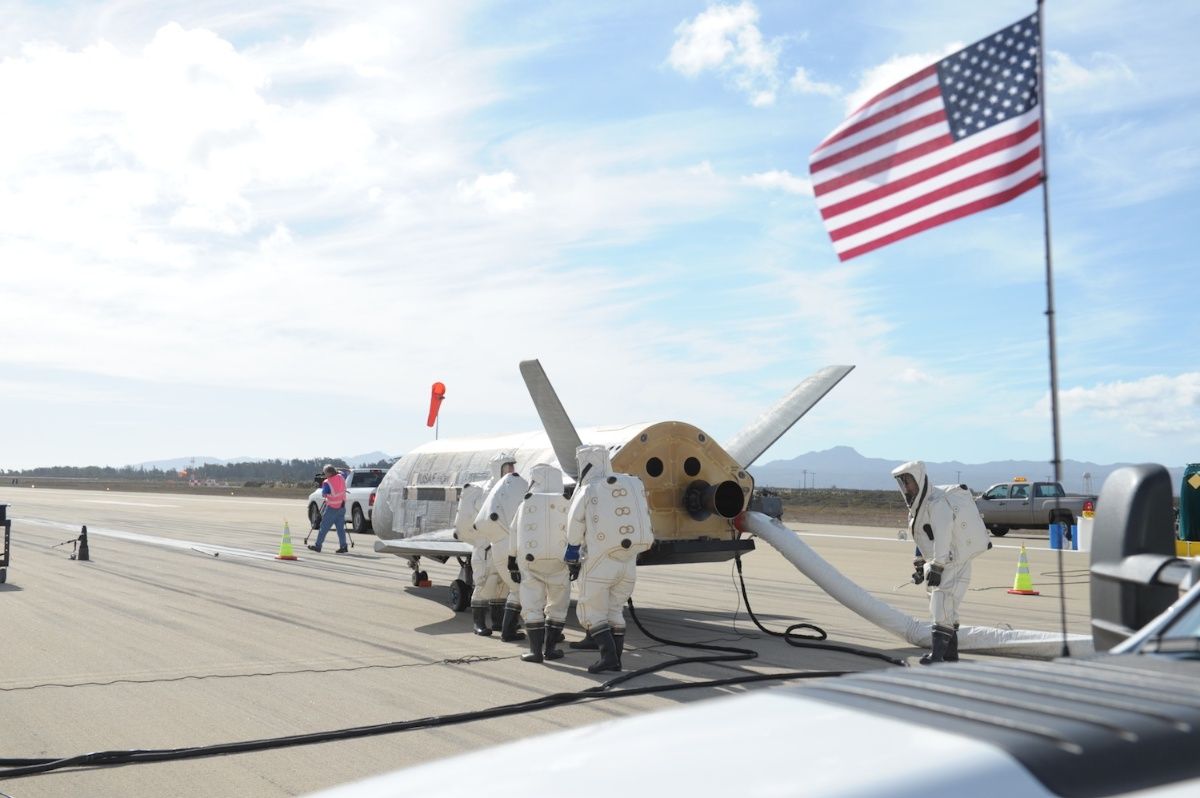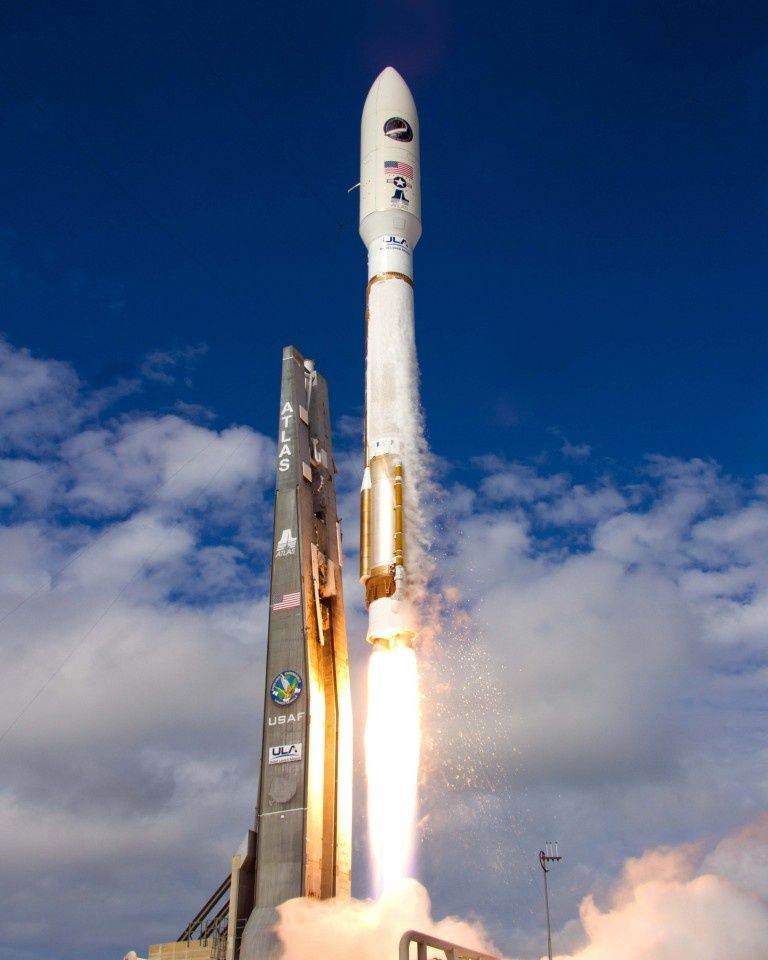
The Pentagon's Defense Advanced Research Projects Agency or DARPA announced Wednesday that it would ally with mega-defense contractor Boeing to build an experimental hypersonic spaceplane capable of delivering small satellites into space and returning to the runway within the same day. The project, known as the Phantom Express XS-1, is a continuation of the United States military's long-term ambition to conquer and militarize outer space.

OPINION:
Elon Musk, Nuking Mars and the Colonization of Space
The XS-1 will be an unmanned vehicle about the size of a business jet capable of carrying small orbiters weighing up to 3,000 pounds into space for about US$5 million – pocket change compared to the current cost of US$55 million per similar cost.
For analyst Bruce Gagnon, a coordinator for the Global Network Against Weapons and Nuclear Power in Space, DARPA's goals couldn't be farther from the peaceful space exploration efforts one might associate with NASA or the optimistic Star Trek motto, “to boldly go where no man has gone before.” Instead, the unmanned vessel is the latest “super drone” meant to boost the U.S. military's Prompt Global Strike efforts to deliver weapon airstrikes to any location in the world within an hour.
“In the DARPA concept videos you see the XS-1 release a satellite into space after they open the bay doors,” Gagnon told teleSUR. “That same technology could allow the XS-1 to reach out and capture a Russian or Chinese satellite, or release an autonomous rocket that could then hit back on Earth as part of the U.S. first-strike strategy.”

The announcement hasn't gone unnoticed by U.S. rivals China and Russia. Both countries have sought to challenge U.S. dominance in the near-to-low-Earth orbital region. Since the 90's there's been an ongoing race to develop and deploy weapons platforms and “dual use” military hardware in space in a post-Cold War sequel to the 20th-century arms and space races that began with the debut of the first communication satellites, Sputnik and Echo.
RELATED:
Drone Wars: North Dakota Land Battle Moves to the Skies
On Wednesday, Russian Defense Minister Sergey Shoigu explained to the upper house of Russia's parliament that Russia's Aerospace Forces are keeping a close watch on advances in U.S. military weapons programs.
"I can tell you that we are wide awake," he dryly noted when asked if the country could effectively counter U.S. space threats, promising to provide a more detailed assessment to the senators behind closed doors.
“Russia and China have seen the writing on the wall about U.S. ‘control and domination’ of space, as outlined in the U.S. Space Command’s Vision for 2020 and other documents,” Gagnon explained.

Vision for 2020 was a 1996 report by the Department of Defense's aerospace joint command headquarters at Peterson Air Force Base in Colorado Springs, Colorado. The report opens with a mission outline for United States Space Command: “Dominating the space dimension of military operations to protect U.S. interests and investment. Integrating Space Forces into warfighting capabilities across the full spectrum of conflict." On its third page, the report notes," the emerging synergy of space superiority with land, sea, and air superiority will lead to Full Spectrum Dominance." The cover of the report depicts a satellite firing a laser beam down on a target below.
“They (Russia and China) have slowly responded by increasing space technology spending and developing new programs to counter the Pentagon’s moves to control space,” Gagnon said, yet “they are far behind the U.S. in total spending and ultimate capability.”
The United States, with its massive defense budget and sprawling military-industrial complex, remains the front-runner in the competition to militarize outer space. While China has patiently been building its ability to launch effective anti-satellite missiles, the U.S. military possesses dozens of Aegis-equipped guided missile cruisers and destroyers capable of knocking down Russia and China's satellites in an actual war.
The administration of U.S. President Donald Trump has already unveiled plans to upgrade the Pentagon's space militarization efforts, announcing in March its intention to resurrect the National Space Council, a high-level advisory council uniting the government and the private sector that Bill Clinton axed in 1993.
White House advisers Robert Walker and Peter Navarro penned op-eds last fall for Space News demanding a “peace through strength” approach from Washington that would “simultaneously strengthen (the U.S.) economy and manufacturing base while significantly expanding (U.S.) civilian and military space budgets.” The articles read like an unholy cross between Ayn Rand, Newt Gingrich and Gene Roddenberry. Using evocative language, the authors propose “private sector solutions” to U.S. national defense and space challenges meant to the counter “existential” threats in space from rival superpowers, ensuring corporate interests and a future where the U.S.'s “freedom-loving people ... lead the way to the heavens above.”

Last month at the annual Space Symposium, Alabama Republican Congressman Mike Rogers called for the creation of a military Space Corps, noting that the proposed service branch would be “just like the Air Force, which had to be separated from the Army in order to be prioritized and become a world-class military service.”
While space-based warfare may seem like a distant prospect, the unveiling of the Phantom Express XS-1 proves that the United States is keeping its eye on the ball, hoping to retain its global hegemony through futuristic warfare and the control over strategic fields of imperialist battles yet to be fought.